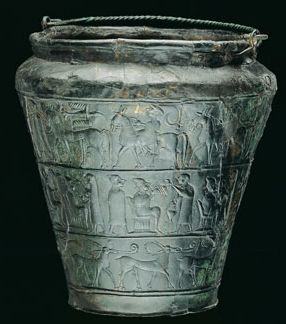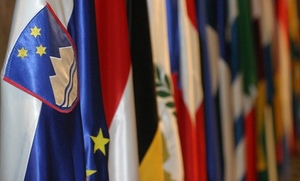
 250,000 BC: The first evidence of human habitation on the territory of present-day Slovenia.
250,000 BC: The first evidence of human habitation on the territory of present-day Slovenia.
120,000 to 33,000 BC: Remains from the early Palaeolithic.
3,900 BC: Pile dwellings on the Ljubljana Marshes.
4th and 3rd century BC: The arrival of Celts, who established the Noricum kingdom.
circa 10 BC: Noricum annexed by the Roman Empire.
5th and 6th century: Invasions by Huns and Germanic tribes.
568: After the departure of the last Germanic tribe (the Langobards) to Italy, Slavs began to dominate the area, but it is not quite clear when they first arrived.
7th century: The Slav people on the territory of present-day Carinthia form the independent Duchy of Carantania, the first Slovenian state.
745: Carantania becomes part of the Frankish Empire; the Slavs convert to Christianity, adopt the Frankish feudal system and gradually lose their independence.
End of 9th century: Magyars invade the Pannonian Basin, intrude into Slovenian territory and cut it off from the other western Slavs. The isolated Slavs of Carantania and of Carniola to the south start developing into an independent nation of Slovenes.
Around 1000: The Freising Manuscripts, the first known writings in the Slovene and Slavic dialect in Latin script.
14th century: Most of the territory of Slovenia was taken over by the Habsburgs. Their powerful competitors were the Counts of Cili, a feudal family from this area, who in 1436 acquired the title of State Counts. This large dynasty, important at a European political level, which had its seat in today’s Slovenian territory, died out in 1456, and its extensive land holdings became Habsburg property.
15th and 16th century: Dissatisfaction with the ineffective feudal defences against the Turks and the introduction of new taxes, particularly tribute, as well as bonded labour, sparks peasant revolts.
Mid-16th century: The Reformation spreads across Slovenian territory, helping to create the foundations of the Slovenian literary language. In 1550 Primož Trubar publishes the first two books in Slovene, Catechismus and Abecedarium. In 1584 the first Slovenian translation of the Bible is printed.
1809-1813: Napoleon conquers south-eastern Slovenian regions and creates the Illyrian Provinces, with Ljubljana as their capital. The short-lived French rule reforms the taxation system and improves the position of Slovene in schools.
1848: The first Slovenian political programme, called ‘Unified Slovenia’ emerges during the European ‘Spring of Nations’ in March and April of 1848, demanding that all the lands inhabited by Slovenes should be united into a single province called Slovenia.
1918: The Kingdom of Serbs, Croats and Slovenes is founded.
1945: The Federal Peoples' Republic of Yugoslavia is established. Of the six Republics, Slovenia develops the most rapidly and its domestic product is 2.5 times the state average, which strengthens the national confidence of the Slovenes.
1988: The first political opposition parties emerge, which in the 1989 May Declaration demand a sovereign state for the Slovenian nation.
April 1990: First democratic elections.
 23 December 1990: In a nationwide plebiscite 88.5 per cent of the votes are cast in favour of a sovereign and independent Slovenia.
23 December 1990: In a nationwide plebiscite 88.5 per cent of the votes are cast in favour of a sovereign and independent Slovenia.
25 June 1991: Slovenia officially declares independence.
15 January 1992: The EU officially recognises Slovenia's independence.
22 May 1992: Slovenia becomes a member of the UN.
1 February 1999: The Association Agreement with the EU comes into effect.
29 March 2004: Slovenia joins NATO.
1 May 2004: Slovenia joins the EU.
1 January 2007: Slovenia introduces the euro, the first new member state to join the Eurozone.
More from the book "Facts about Slovenia" (March 2006) ![]()